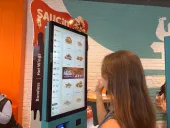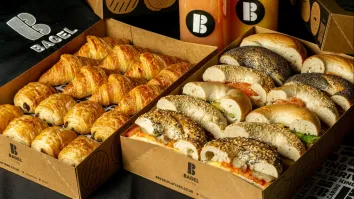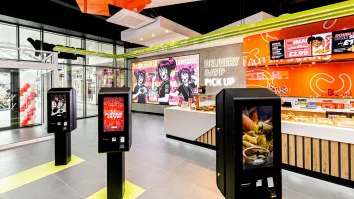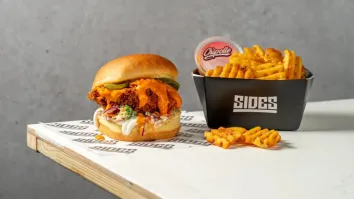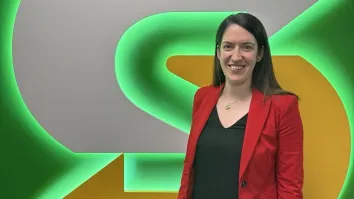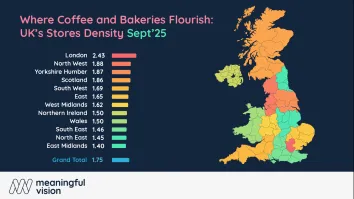The payment innovations that will rebuild the QSR industry
By David PayetIt is no exaggeration to say that the years 2020 and 2021 were a bad time for the quick service restaurant (QSR) industry.\
Social distancing, contact tracing, complete closures and the sudden need to shift all or most sales and payments online all had an impact on the industry. ‘Eat Out to Help Out’ went some way to getting people back into QSRs and other food-service venues, but it couldn’t be sustained over the long term.
The number of Britons who said that they were likely to purchase from a restaurant or pub chain in the next 30 days fell 30 percentage points, down from 50 to 20, despite how easy it is to order online.
The industry has adapted quickly, doing everything it can to avoid closures. All aspects of the ordering, payment and collection process are now contactless, digital systems like click and collect have been brought to the fore and companies are increasing investment in innovative technologies like facial recognition and tabletop ordering. The QSR sector is weathering the pandemic better than other sections of the food service industry – it was already at the forefront of digitalisation through the
widespread adoption of click and collect – but there was no way to make up for the loss in eat-in sales.
Unsurprisingly, McDonalds is the best performer in the field, despite a 30% worldwide drop in income and a 68% drop in net profit in the second quarter of 2020. Those are still extremely worrying numbers, especially for a company doing well when compared to eat-in restaurants, which typically lost twice as much. The company was investing heavily in digital engagement before the pandemic, embracing Uber Eats and Doordash to the point that as early as 2019 one tenth of its orders were for
Uber Eats delivery.
Accelerating the pace of digital change
By one estimate, the QSR industry has adopted more digital technology in the past year than what they would be expected to in the next five to ten years. Almost every QSR outlet in the country will have some sort of digital technology, from the extensive ordering kiosks and bespoke apps in large franchises to Just Eat and Deliveroo ordering in smaller restaurants.
This dependency on third party delivery apps for taking orders, processing payments and arranging delivery could be potentially harmful in the long run. Obviously, although it is better than not being able to take orders at all, it cuts into profits at a time when restaurants are already strapped for cash. It also means that restaurants can’t take payments directly – everything has to be processed by an intermediary, which could cause issues and add an extra layer of complexity to a company’s payment infrastructure.
This complexity, and the overall challenge of digital transformation, means that some brands may struggle to integrate all aspects of their business with new digital systems. There are still gaps in contactless wallet acceptance, for example, and difficulties in integrating loyalty programs. Starbucks, for example, has a digital version of its loyalty card, but does not allow customers who order on Uber Eats or Just Eat to collect rewards, and they are one of the world’s largest QSR brands. In short,
having customers use a variety of apps to access one restaurant breaks up the customer experience, when modern technology should allow for a fully cohesive journey whether a customer is in a restaurant or ordering online.
Although the industry has come a long way in a very short amount of time, there is still room for improvements that will benefit both QSR companies and customers, particularly as lockdowns end and restaurants can return to normal.
New payment systems for a post-pandemic industry
When restaurants are allowed to re-open to full capacity they will not be returning to their pre-pandemic business as usual, but a new normal characterised by an embrace of what worked during the lockdown and what customers liked about face-to-face interaction. Since so much has been done in so little time there is no reason to stop innovating.
New integrations and experiences are possible using the technology that expands upon the digital capabilities QSR companies are already using, for example, payments with Apple Pay and Google Pay enabling 1-click mobile loyalty subscription. This bypasses the need for plastic cards or for merchants to have individual apps by deploying the loyalty card directly to a customer’s digital wallet.
Scan and pay is another technology that looks interesting in a QSR context since it reduces the friction of payments while also adding extra features. Developed originally for the retail industry, this payment experience finds a natural fit in a socially distanced world. In self-service restaurants, like Pret-A-Manger, it could allow customers to bypass the checkout and payment process entirely by scanning the QR code to log in to the store itself, then scanning the barcode of each item before paying, with no interaction needed with staff, freeing them up for more valuable activities. This could even allow ‘fast food’ restaurants and coffee houses to bring restaurant-style eat-in experiences to customers: they can scan their table, make an order through an app and their food will arrive as soon as it’s done.
But these features alone won’t be truly effective without an integrated, omnichannel solution that connects the dots between a customer’s online and in-store ordering. It will allow for a far richer customer experience leveraging tokenised payments and key features like reward cards to customer accounts seamlessly and across all platforms. This is as vital for huge international franchisee chains as it is for smaller regional restaurants, and it creates a solid foundation on which to build the next
innovations that will make consumers’ lives easier.

